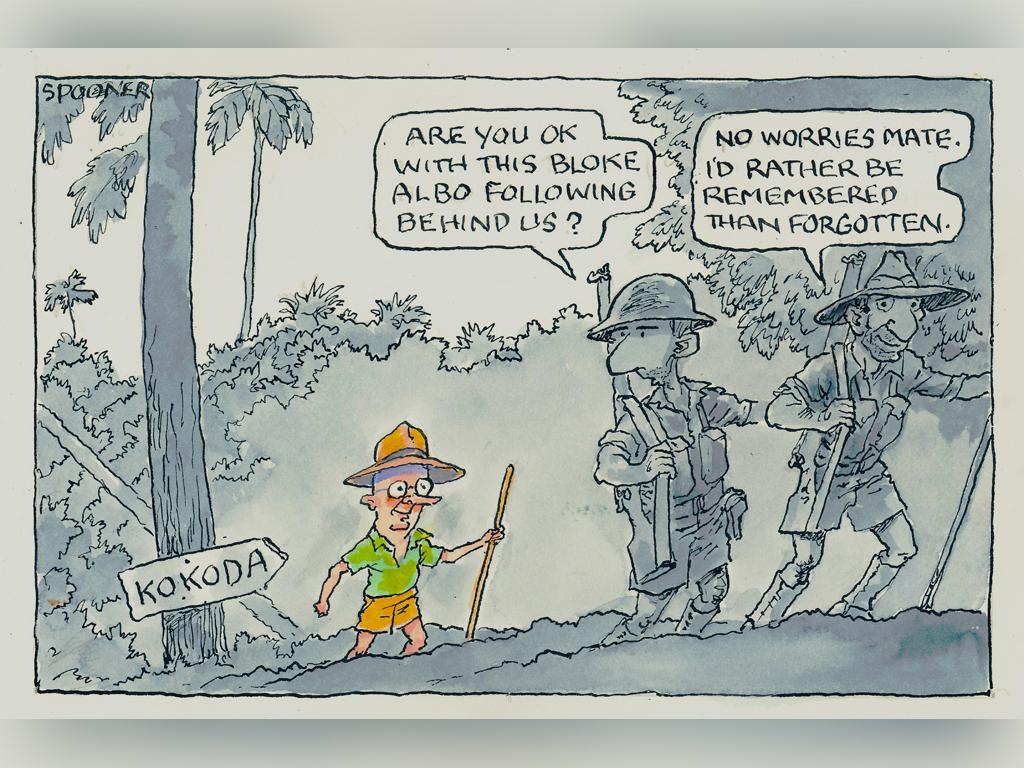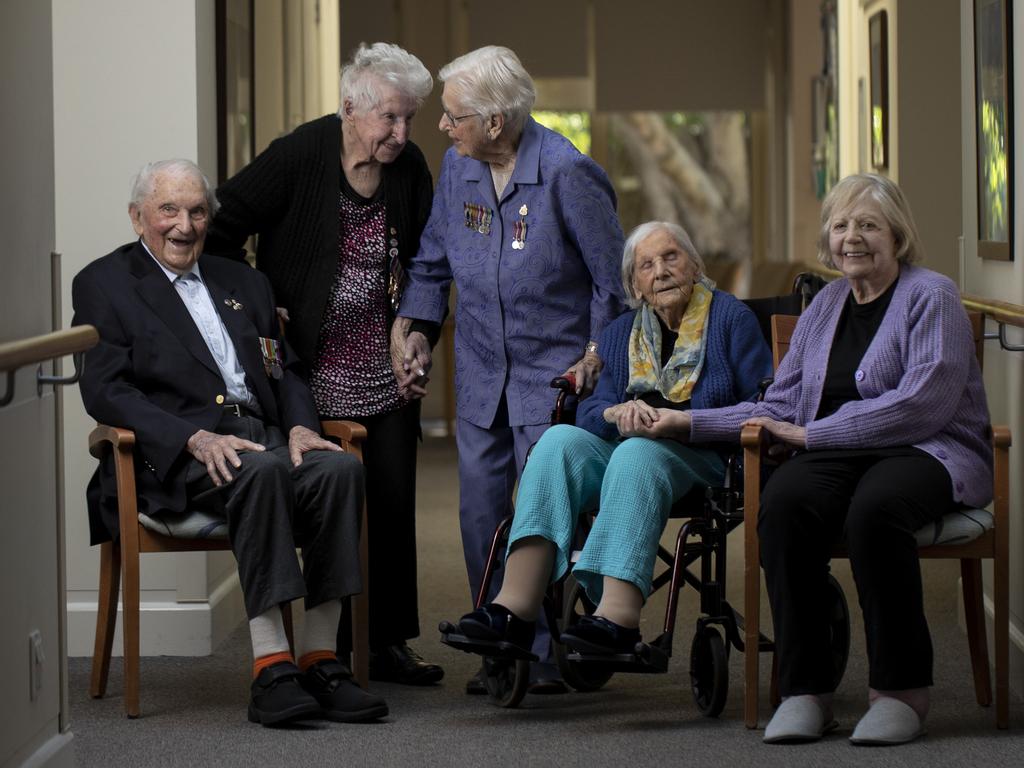Anzac Day 2025: WWII veteran Jim Grebert says war is no place for today’s generation
If World War II veteran Jim Grebert had his time over, he’d put an ‘old head on young shoulders’ and not march off to war.

Jim Grebert sometimes wishes he could talk to the callow 20-year-old who put his age up by a year to fight the Japanese. The old boy is now 102, and he’d have a word or two of advice for his young self.
“I’d say don’t do it,” he says quietly from his second home, the Sandgate RSL, a hive of activity in Brisbane ahead of Anzac Day.

“I was only a teenager when the war broke out – 16 or so, you see, and I remember us, my brothers and I, saying ‘We hope the war keeps going, then we’ll all be soldiers’. What a stupid thing to say was that? You can’t put an old head on young shoulders. To us it was going to be a great adventure, not a bloody killing field.”
It’s a privilege to hear him speak, telling it like it was in those dark days when the homeland was threatened by invasion for the only time in Australia’s history.
He hopes to take his place on Friday at the head of the Anzac Day march in Sandgate, one of the hardy few World War II veterans still up to attending the commemorations in cities and towns all across the nation.

Age is certainly catching up with them. Of the 900,000-odd Australians who donned a uniform in World War II, fewer than 1300 remain, at an average age of 99. The oldest known survivor is 108, according to the Department of Veterans’ Affairs.
By the end of next year, the number of World War II veterans is projected to dip to 800.
In Adelaide, 107-year-old Colin Wagener is the last man standing from his unit, the 2/3rd Australian Composite Anti-Aircraft Regiment. As usual on Anzac Day, he will be thinking about the friends he made and lost during the war.

“I just go year by year, month by month, day by day,” Mr Wagener says. “I’ve lost my unit, of course. I’m the oldest World War II veteran left in South Australia.”
He and Mr Grebert are part of an even more exclusive subset of vets: those who engaged in combat. Mr Wagener, a signaller, joined up as a 19-year-old and was on hand, on the Malaysian island of Labuan, for the surrender of the Japanese garrison commander, General Masao Baba, at the end of the war in September 1945.

Mr Grebert’s experiences in New Guinea and Bougainville were so harrowing he couldn’t bring himself to speak of them for decades, not even to his family.
“Gramps only started opening up a few years ago,” says granddaughter Helen Bishop, with whom he lives. “He lost really close mates; he went through some horrible things and we only got an idea of how bad it was for him late in his life.”
Having claimed he was 21 – the recruiter didn’t ask too many questions – young Jim, a sawmill hand from Millaa Millaa on the Atherton Tablelands in far north Queensland, was assigned to the mainly Melbourne-raised 58/59th infantry battalion in New Guinea’s rugged Finisterre Ranges.

If the hot, humid conditions were bad, the fighting was worse. He was a mortar man, a prime target for the Japanese. One day, his backpack was torn in half by a shell fragment, miraculously sparing him injury. His mate George Hope, a “fantastic little guy”, wasn’t so lucky when he volunteered to escort a tank through the lines. Poor George was picked off by an enemy sniper and killed.
“I still think about him,” he says. “I think about all the mates I lost.”
How does he feel about the fading out of the World War II generation? He pauses, pondering the question. “It comes around to us all sooner or later,” he replies. “If I’m here today, OK. If I’m not, there’s nothing I can do about it.”
The gaps in the ranks of Australia’s greatest living generation will be more apparent than ever in Friday’s Anzac Day commemorations and marches.
In Sydney, only eight WWII veterans are expected to turn out; Brisbane is hoping for six.

Mr Wagener’s hometown is planning to accommodate up to 20 nonagenarians and centenarians in jeeps and vintage cars leading the parade through the Adelaide CBD. Sadly, Launceston’s last WWII veteran died five years ago, an increasingly common situation.
Mr Wagener says the best thing that happened to him during the war was coming home.
“Getting off the train at Adelaide railway station, Christmas morning 1945 – that’s the part I remember the most,” he recalls. “We got off the boat in Brisbane. We hadn’t had anything to eat for a long time and we were loaded in trucks and slowly driven down the main street of Brisbane.
“We … were dirty, we were hungry but we didn’t care. We were going home.”

Ms Bishop, 54, says Anzac Day is an opportunity for the family to honour her grandfather’s service, as well as that of his three brothers. His eldest brother, Walter, fought with the army at Milne Bay in eastern New Guinea in 1942, while two of the younger boys, Ted and Jack, went into the RAAF.
“It’s just so important to us to recognise and reflect on what they’ve done and how they served their country,” she says of the World War II generation.
Mr Grebert’s hope is that no other generation will have to endure what he did. “There’s nothing to recommend war,” he says. “It’s all bad news, death and destruction. My advice to young people is don’t go. Let’s hope it never happens again.”




To join the conversation, please log in. Don't have an account? Register
Join the conversation, you are commenting as Logout